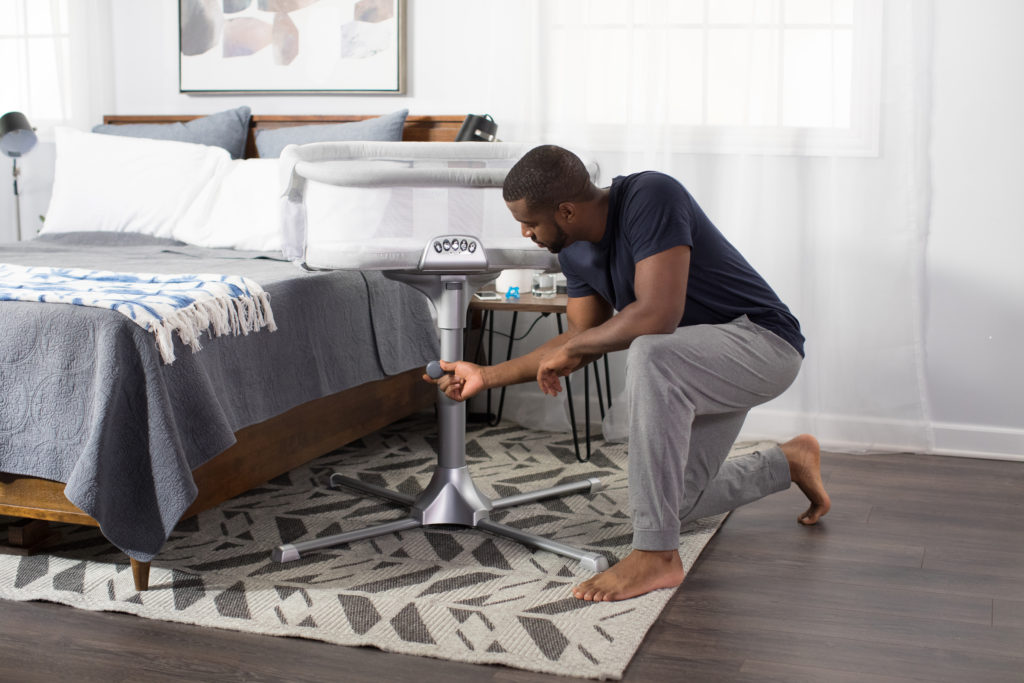


Note that you should always check the weight limit on any item you're using (a bassinet may have an especially low one), and mini cribs and playards need to be retired if your child is nimble enough to climb out on her own, even if she hasn't reached the height limit. (They may be a bit bulky for air travel, however.) Depending on which playard you choose, you might also get additional bells and whistles such as a bassinet attachment, a changing station, night light and diaper caddy. Playards usually fold into a compact tower, so they're fairly easy to travel with, especially if you're driving. Playard: Once called playpens, these mesh-sided spaces work for baby's naps, overnight sleep or simply playing in a contained space (like a hotel room that isn't baby-proofed).The weight limit for mini cribs is often higher than bassinets, so they might be a better longer-term solution for room sharing after 3 months. Some mini cribs fold flat, making them a popular choice to keep at Grandma's house. Mini crib: Ideal for small nurseries or to keep in the master bedroom, mini cribs have narrower mattresses than standard cribs, so larger babies may outgrow them more quickly.Some have collapsible bases that make them easy to stash away when not in use. Since bassinets tend to be small and lightweight, they're really only suitable for very young babies.
Halo bassinest newborn insert upgrade#
Bassinet: Think of a baby bassinet as an upgrade to the old-fashioned baby cradle.But which one - or ones - should you invest in? The answer might be different for different families.īassinets, mini cribs and playards can all come in handy for new parents who want to keep their baby close by. You may have heard that all three work for newborn sleep. Bassinets, mini cribs and playards: What’s the difference? Once baby has reached this milestone or the weight limit - whichever comes first - she should be transferred to a crib. Additionally, most bassinets have clear weight limits, which can also put an end to your baby’s time in the bassinet - even before she can roll over. “The rule of thumb is, when the infant is active and starting to roll over, it would be wise to have the infant sleep in the crib,” says Pedulla. One important thing to keep in mind, though: While the AAP recommends room sharing for 6 to 12 months, most babies grow out of bassinets by the time they are 3 or 4 months old, sometimes sooner. And if you're recovering from a C-section, you may also find that the lower height of a bassinet makes it easier to lift baby in and out - with a standard crib, there are higher sides to lean over. Having baby by your bedside can help facilitate late-night feedings, bedtime bonding and nighttime comforting. Though not a necessity - a newborn can go straight into a crib - many parents find bassinets incredibly helpful in the early days due to their convenience and portability, says Michele Pedulla, D.N.P., a pediatric nurse practitioner and associate professor at Regis College. If you're planning on using a bassinet, you should have it ready to go as soon as your baby comes home from the hospital. "This makes it easier for them to have their baby sleep in their room." How long does baby sleep in a bassinet? "I love it when parents use a bassinet for their baby in the first months of life," says Emily Scott, M.D., a pediatric hospitalist at Riley Children’s Health in Indianapolis, Indiana. The American Academy of Pediatrics (AAP) recommends parents and infants sleep in the same room - not the same bed - for at least the first 6 months of baby's life in order to reduce the risk of SIDS. A newborn bassinet is a comfortable and convenient way to keep baby in your room during these early months without taking up quite as much space as a standard crib.


 0 kommentar(er)
0 kommentar(er)
